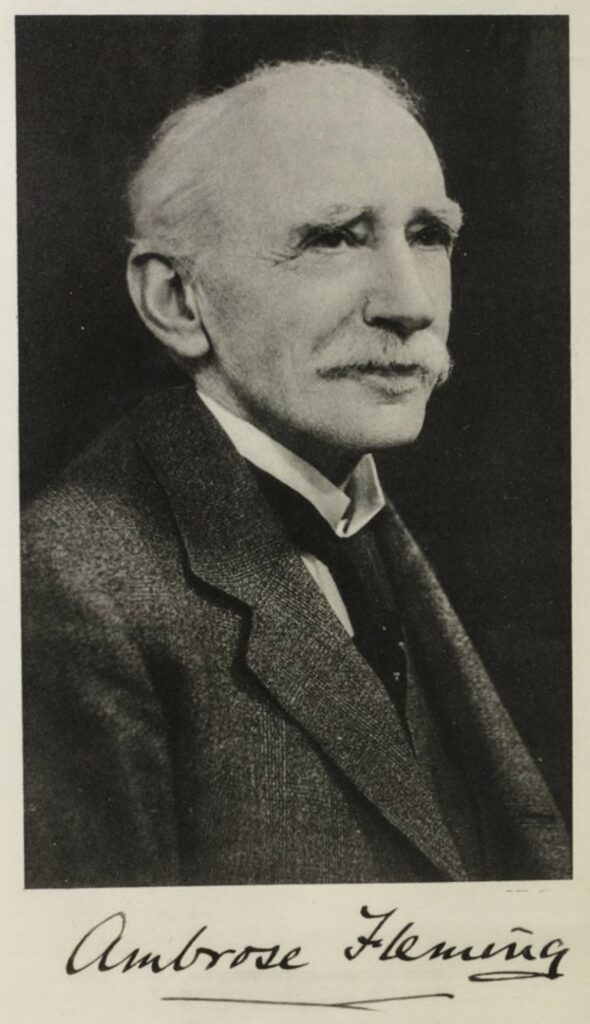
Sir John Ambrose Fleming FRS died in 1945, aged 95 (born 29 November 1849). “He was an English electrical engineer and physicist who invented the first thermionic valve or vacuum tube, designed the radio transmitter with which the first transatlantic radio transmission was made, and also established the right-hand rule used in physics. He was the eldest of seven children of James Fleming DD (died 1879), a Congregational minister, and his wife Mary Ann, at Lancaster, Lancashire, and baptised on 11 February 1850. A devout Christian, he once preached at St Martin-in-the-Fields in London on evidence for the resurrection. In 1932, he and Douglas Dewar and Bernard Acworth helped establish the Evolution Protest Movement. Fleming bequeathed much of his estate to Christian charities, especially those for the poor. He was a noted photographer, painted watercolors, and enjoyed climbing the Alps.” – Wikipedia
In Fleming’s obituary, W H Eccles FRS, wrote, “As the years passed he [Fleming] became very deaf, but he continued his lecture work and still charmed great audiences and stimulated students. It is thought he could utilize his deafness as a defense when he wished to ignore advice; at any rate his hearing varied whimsically. This deafness seems to have been a family trouble, for his sister, who now and then visited him at the [University] College [London], was also deaf. Their conversation penetrated to other parts of the department and involuntary auditors would occasionally hear the lady telling her brother not to be so cantankerous.”
Visit Event Site

